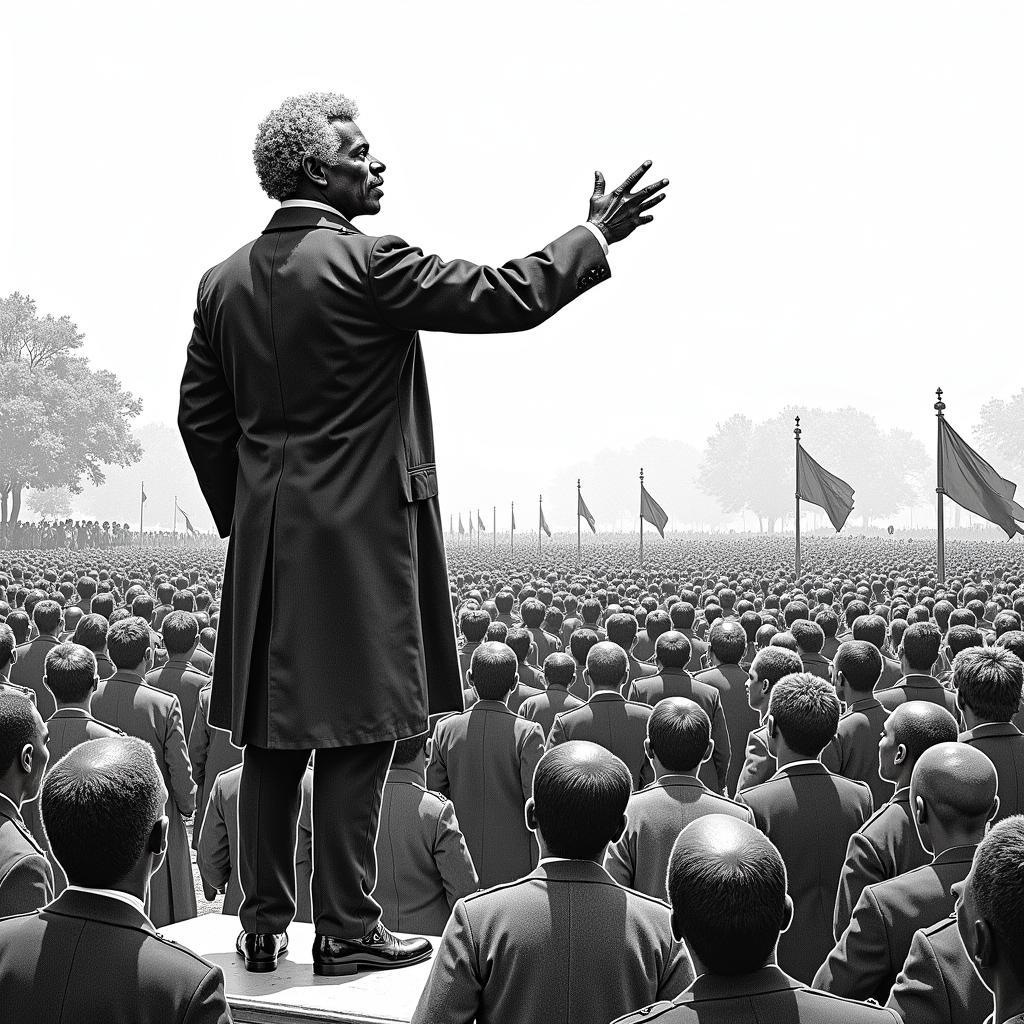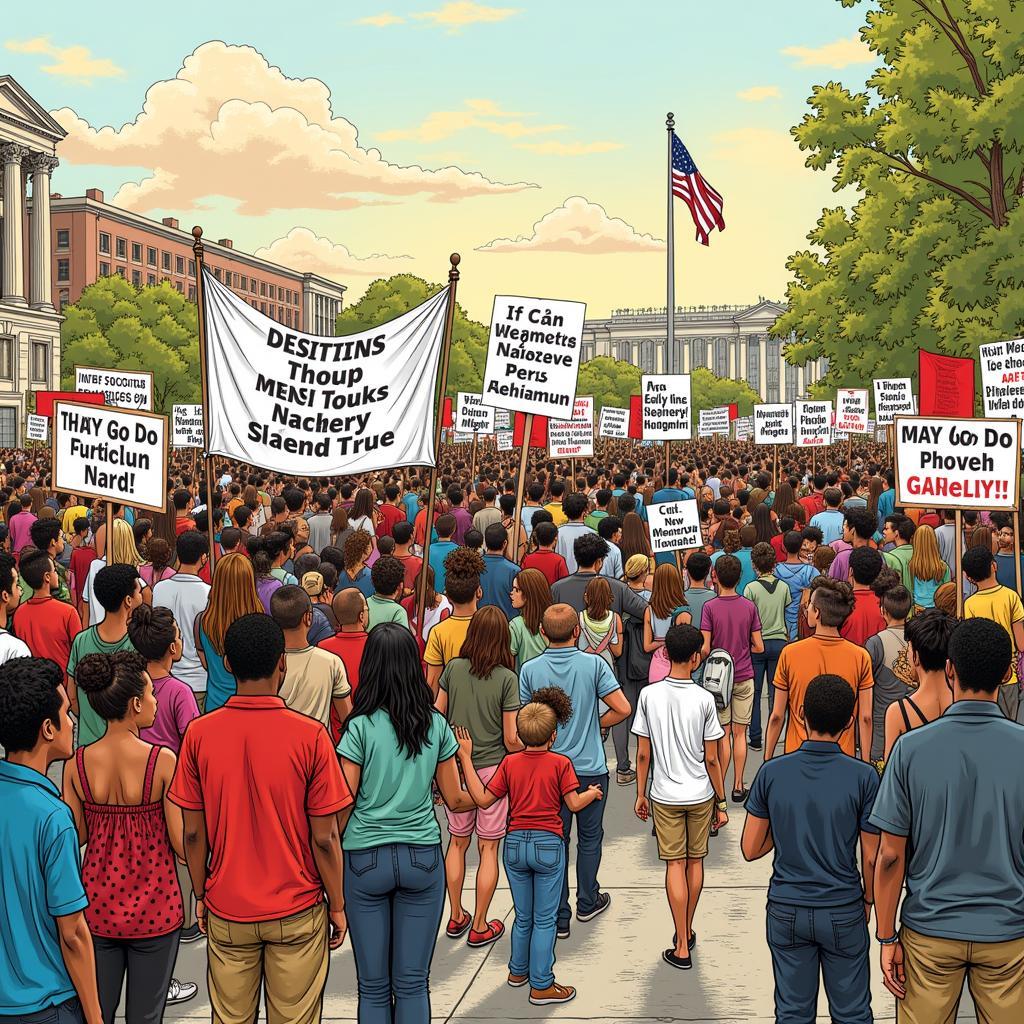The American Anti-Slavery Society, a name forever etched in the annals of history, stands as a testament to the unwavering pursuit of justice and equality. But what exactly was this organization, and what impact did it have on the fight against the brutal institution of slavery in the United States?
Understanding the American Anti-Slavery Society’s Mission
Founded in 1833, the American Anti-Slavery Society was a national abolitionist organization dedicated to the immediate and complete abolition of slavery in the United States. Its formation marked a turning point in the anti-slavery movement, uniting like-minded individuals from across the nation under a single banner. Driven by a potent blend of moral conviction and political activism, the Society aimed to eradicate slavery through education, advocacy, and direct action.
Key Figures and Their Influence
The American Anti-Slavery Society boasted a diverse and influential membership, drawing in prominent figures like William Lloyd Garrison, Frederick Douglass, Lucretia Mott, and Sojourner Truth. These abolitionist leaders, each with their unique voices and experiences, played pivotal roles in shaping the Society’s message and tactics.
-
William Lloyd Garrison, a staunch advocate for immediate abolition, served as the Society’s president and published the influential abolitionist newspaper, “The Liberator.”
-
Frederick Douglass, a former enslaved person, captivated audiences with his powerful oratory skills and first-hand accounts of the horrors of slavery.
-
Lucretia Mott and Sojourner Truth, prominent women’s rights advocates, tirelessly challenged the intertwined injustices of slavery and gender inequality.
 Frederick Douglass delivering a powerful speech to a captivated audience
Frederick Douglass delivering a powerful speech to a captivated audience
Tactics and Strategies: From Moral Persuasion to Political Action
The American Anti-Slavery Society employed a multi-faceted approach to combat slavery. Moral suasion, the belief that appealing to people’s consciences could sway public opinion, formed a cornerstone of their strategy. They distributed millions of anti-slavery pamphlets, newspapers, and books, aiming to educate the public about the evils of slavery and ignite moral outrage.
However, the Society didn’t shy away from more direct actions. They actively assisted enslaved people escaping through the Underground Railroad, a clandestine network of safe houses and routes leading to freedom in the North. Furthermore, they petitioned Congress, organized boycotts of goods produced by enslaved labor, and advocated for legal and political reforms to dismantle the institution of slavery.
The Legacy of the American Anti-Slavery Society
The road to abolition was fraught with challenges and fierce opposition. The American Anti-Slavery Society faced constant criticism, threats, and even violence. Their meetings were disrupted, publications were burned, and members were subjected to harassment and intimidation.
 A protest organized by the American Anti-Slavery Society
A protest organized by the American Anti-Slavery Society
Despite these adversities, the American Anti-Slavery Society played a crucial role in shifting public opinion, fueling the abolitionist movement, and ultimately contributing to the abolition of slavery in the United States with the passage of the 13th Amendment in 1865.
The legacy of the American Anti-Slavery Society extends far beyond the abolition of slavery. Their unwavering dedication to human rights, equality, and justice continues to inspire activists and advocates fighting against oppression and injustice in all its forms. Their story reminds us of the power of collective action, the importance of raising our voices against injustice, and the enduring belief that a more just and equitable world is possible.
Frequently Asked Questions
1. What were the main goals of the American Anti-Slavery Society?
The American Anti-Slavery Society’s primary goal was the immediate and complete abolition of slavery in the United States. They aimed to achieve this through education, advocacy, and direct action.
2. What tactics did the American Anti-Slavery Society use?
They employed various tactics, including moral suasion through publications, aiding enslaved people escaping via the Underground Railroad, petitioning Congress, organizing boycotts, and advocating for legal and political reforms.
3. What were some of the challenges the American Anti-Slavery Society faced?
They faced significant opposition, including criticism, threats, violence, disrupted meetings, burned publications, and harassment of members.
4. What is the lasting legacy of the American Anti-Slavery Society?
Their legacy lies in their contribution to the abolition of slavery in the United States and their enduring inspiration for those fighting against oppression and injustice globally.
5. How can I learn more about the American Anti-Slavery Society and their work?
You can explore more resources and articles on our website, including in-depth profiles of key figures, timelines of significant events, and analyses of their impact on the abolitionist movement.
For further assistance or inquiries, please don’t hesitate to contact us:
Phone Number: 02043854663
Email: [email protected]
Address: Khu 34, Bắc Giang, 260000, Việt Nam
We have a dedicated customer support team available 24/7 to assist you.